Jewish Origins Collection (13 vols.)
Digital Logos Edition
Overview
The 13-volume Jewish Origins Collection examines the history of Judaism and the history of Israel as it is represented in both the Old Testament and in the historical and archaeological evidence. The authors assess the theological and social implications of Israel’s development, the emergence of Judaism in the culture of ancient Palestine, and the key characters in Hebrew Scripture, such as Moses, Joshua, and Elijah. They also outline the developments of Passover symbolism, the role of exile in Jewish and Christian thought, and the relationship between Samaritan and Jewish traditions.
The history of the Jewish people has fascinated generations of archaeologists, biblical scholars, theologians, and laypeople from both Jewish and Christian traditions. Jewish history has been the focus of academic study, political controversy, and theological dispute for centuries. It is deeply interwoven with Christian history. Grappling with Jewish origins and the history of Israel inevitably raises historical, cultural, and hermeneutical questions about the Bible. The study of Jewish origins is infused with the biblical narrative—proposing a new methodology for understanding Jewish history affects how the Bible is read and understood. This collection will benefit pastors and laypersons interested in Jewish history, as well as scholars working at the intersection of Old Testament study and Jewish thought.

- Examination of Jewish history and historiography
- Outline of the development of Passover symbolism
- Biblical chronologies
- Study of the role of exile in Jewish and Christian thought
- All Scripture references are linked to Hebrew texts and English Bible translations in your library
- Title: Jewish Origins Collection (13 vols.)
- Volumes: 13
- Pages: 3,417
This title is included in the following collections
You can save when you purchase this product as part of a collection.
Logos 8 Messianic Jewish Diamo...
$2,999.99$2,999.99Logos 9 Messianic Jewish Diamo...
$2,999.99$2,999.992025 Messianic Jewish Portfoli...
$4,749.99$3,562.49Verbum 8 Portfolio Legacy Libr...
$4,749.99$4,749.99
- $4,999.99
- $7,749.99
- $23,999.99$17,999.99
- $21,749.99
- $24,999.99
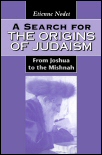
This volume contains Etienne Nodet’s fascinating theory of Jewish origins. This radical reconstruction of the origins of Judaism starts by observing that Josephus's sources on the early history of Israel do not agree with the Bible and that the oldest rabbinic traditions show no sign of a biblical foundation. Another interesting question is raised by the Samaritan claim, at the time of Antiochus Epiphanes, that they had only recently received the Sabbath from the Jews. From such details, Nodet creates a comprehensive line of argument which reveals two major sources of Judaism, as symbolized in the subtitle of his work: Joshua was the one who established in writing a statute and a law at the Shechem assembly, while the Mishnah was the ultimate metamorphosis of traditions brought from Babylon and combined with Judaean influences.
Etienne Nodet is Professor of Ancient Jewish Literature at the Ecole Biblique et Archéologique in Jerusalem.
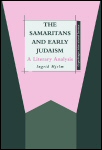
In The Samaritans and Early Judaism, Ingrid Hjelm examines the various ancient sources mentioning Samaritans, dating from the Persian period to well into the Roman period and emanating from Jewish, Christian, Hellenistic and Samaritan circles. She addresses those issues that can be related to a possible Samaritan-Judean conflict, and special attention is given to questions about temple, high priests, Levites and prophets, as well as Shechem and Heliopolis. In this radical new investigation, Hjelm points out anachronisms in both the ancient writers and our reading of them and proposes a new understanding of the formation of both Samaritanism and Judaism.
Ingrid Hjelm is Research Associate at the Carsten Niebuhr Institute of Near Eastern Studies and the Department of Biblical Studies, University of Copenhagen. She is also the author of Jerusalem’s Rise to Sovereignty: Zion and Gerizim in Competition in the History of Jerusalem Collection.
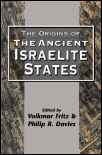
Every year hundreds—even thousands—of scholars and students go to Israel and pay for the privilege of working hard at uncovering its past. Why? The appeal of the Hebrew Bible lies pre-eminently in its link with history and archaeology. Questions of Israelite origins have dominated much of the twentieth century scholarship on biblical history, and continue to fascinate scholars and laypersons from both Christian and Jewish traditions around the world. This volume examines the history of the Israelite and Judean states. The contributors cover method, society, and historical sources.
Contributions to this volume include:
- “Historiography of Ancient Palestine and Early Jewish Historiography: W. G. Dever and the Not So New Biblical Archaeology,” Thomas L. Thompson
- “The Construction of the Davidic State: An Exercise in Historiography,” Baruch Halpern
- “Sociological and Biblical Views of the Early State,” Christa Schafer-Lichtenberger
- “From Patronage Society to Patronage Society,” Niels Peter Lemche
- “Bare Bones: Putting Flesh on the Economics of Ancient Israel,” David Hopkins
- “Saul ben Kish in History and Tradition,” Diana Edelman
- “Re-Reading Samuel (Historically): ‘Etwas mehr Nichtwissen’,” Graeme Auld
- “Sources and Composition in the History of David,” Nadav Na’Aman
- “Monarchy and Re-urbanization: A New Look at Solomon’s Kingdom,” Volkmar Fritz
- “The ‘Ban’ in the Age of the Early Kings,” Walter Dietrich
Volkmar Fritz is Professor of Old Testament Studies and Biblical Archaeology at the University of Giessen and Director of the German Protestant Institute of Archaeology in Jerusalem.
Philip R. Davies is Professor of Biblical Studies in the University of Sheffield.
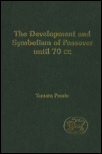
In this important volume, Tamara Prosic gives a new explanation of the origins, development and symbolism of Passover.
First, she examines Passover from the diachronic perspective, tracing its development from the period before the centralization of the cult until the second destruction of the temple. Issues with previous scholarship are considered, while at the same time she places the study of Passover within the framework of the new paradigm of historical studies of ancient Israel that advocates the indigenous Canaanitic origin of Israelites.
The second part of the book is synchronic in its approach to Passover and deals with its symbolism. Prosic discusses Passover in biblical legends arguing that the pre-Yahwistic Passover was essentially a rite of passage. From there the investigation moves to symbolic elements of Passover such as time symbolism, space symbolism and symbolism of the sacrifice.
Tamara Prosic is a lecturer at the School of Historical Studies at Monash University, Australia.
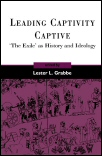
The study of exile has had forceful influence on Old Testament scholarship. When discussing history and literature, things are measured in “pre-exilic” and “post-exilic” terms. The concept of sin¬–exile–restoration has made a major impact on theological thinking, both in the Old Testament itself and in subsequent theological discussion. The exile is a powerful symbol in the Bible. Did real people from Judah go to Babylon into exile? Or are we dealing with a theological and literary concept? This volume aims to address many of the issues in the current approach to studying the exile.
Contributions to this volume include:
- “Die Exilszeit als Ernstfall fur eine historische Rekonstruktion ohne biblische Texte: Die neubabylonischen Konigsinschriften als Primarquelle,” Rainer Albertz
- “Ezra’s Re-enactment of the Exile,” Bob Becking
- “Exile! What Exile? Deportation and the Discourses of Diaspora,” Robert P. Carroll
- “The Exile under the Theodolite: Historiography as Triangulation,” Lester L. Grabbe
- “The Exile in History and Myth: A Response to Hans Barstad,” Thomas L. Thompson
- “The Strange Fear of the Bible: Some Reflections on the ‘Bibliophobia’ in Recent Ancient Israelite Historiography,” Hans M. Barstad
- “Exile? What Exile? Whose Exile?” Philip R. Davies
- “Exile a Period—Exile a Myth,” Knud Jeppesen
- “Reflections,” Lester L. Grabbe
Lester L. Grabbe is Professor of Hebrew Bible and Early Judaism at the University of Hull. He is founder and convener of the European Seminar in Historical Methodology.
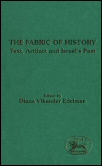
In Fabric of History, six scholars explore the nature of history and historical reconstruction and the place of history within biblical studies. The uncritical use of both text and artifact that continues to dominate histories of Israel and Judah testifies to the need for a wider grassroots awareness of the basic issues involved in doing history as a biblical scholar. A growing number of scholars are questioning the theoretical underpinnings of the main schools of research and are calling for an approach that makes a more critical evaluation of both textual and artifactual material before using it in historical reconstruction.
Contributions to this volume include:
- “Doing History in Biblical Studies,” Diana Edelman
- “From History to Interpretation,” Ernst Axel Knauf
- “Text, Context and Referent in Israelite Historiography,” Thomas L. Thompson
- “Is it Possible to Write a History of Israel without Relying on the Hebrew Bible?” J. Maxwell Miller
- “Archaeology, Material Culture and the Early Monarchial Period in Israel,” William G. Dever
- “The Role of Archaeological and Literary Remains in Reconstructing Israel’s History,” Gosta W. Ahlstrom
Diana V. Edelman is a senior lecturer in the Department of Biblical Studies at the University of Sheffield.
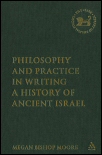
Philosophy and Practice in Writing a History of Ancient Israel elucidates and examines assumptions about history writing that current historians of ancient Israel and Judah employ. It is undertaken in the context of the conflict between so-called “minimalists” and “maximalists” within the discipline today.
Though the use of the Bible as evidence is the focal point of the opposition of these two approaches, Moore shows that a number of related philosophical and practical concerns are telescoped in this issue, including concepts of empiricism, objectivity, representation and language, subject, explanation, truth, and evidence evaluation and use.
Organized around these topics, Philosophy and Practice aims to situate the study of ancient Israel and Judah in the broader intellectual context of academic history in general and to provide insight into the formative assumptions of the current debate. It also aims to show that the central issue of the reliability of the Bible as evidence is surrounded by related issues that are equally important for understanding the past of ancient Israel and Judah and writing about it. Moore shows that ideas about objectivity in particular have a direct bearing on the evidentiary debate, which, in turn, affects what subjects and modes of explanations historians see as available to them. Moore argues that current historians of ancient Israel are beginning to work with a notion of historical truth that attempts to take into account the many contingencies for the concept and writing of history that twentieth-century discussions about history have introduced.
Moore has done a tremendous job in sorting out the recent history of historiography on ancient Israel and deserves all our thanks.
—Ernst Axel Knauf, Review of Biblical Literature
Megan Bishop Moore is Adjunct Professor of Religion at Wake Forest University.
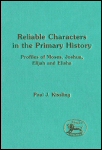
This work investigates the reliability of Moses, Joshua, Elijah, and Elisha as they are presented in biblical history. Biblical scholarship often examines textual traditions, archaeology, and the historical context, but spends little time seeking to understand the characters themselves as they are portrayed in the biblical narrative. There is also a marked tendency to idealize characters such as Moses, Joshua, Elijah, and Elisha by emphasizing their positive aspects, and minimizing their negative aspects. This volume intends to correct that, and tries to see the key figures in Israel’s history for who they really are.
Paul J. Kissling is Professor of Old Testament and Director of Research for TCM International's Institute near Vienna, Austria. He has served for over 25 years as a minister and elder in Christian Churches in Michigan, Illinois, and England. Paul received the bachelor's degree from Great Lakes Christian College, the M.Div. from Lincoln Christian Seminary, the Th.M. from Trinity Evangelical Divinity School, and the Ph.D. from the University of Sheffield (England). Paul has taught and preached in more than 20 countries and is the author of several books and articles in both scholarly and popular publications. He is the author of the College Press NIV Commentary: Genesis.
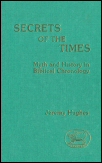
This book is concerned primarily with the chronology of the Hebrew Bible in its various textual forms. The central thesis is that these chronologies are essentially schematic and may be seen as mythical expressions of a belief that human history is ordered according to a divine plan.
Jeremy Hughes is a professor at the Oriental Institute at Oxford University.
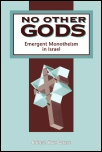
This is the first full-scale assessment of the theological, social and ideational implications of our new understandings of ancient Israel's social and religious development. Scholars now stress the gradual emergence of Israel out of the culture of ancient Palestine and the surrounding ancient Near East rather than contrast Israel with the ancient world. Our new paradigms stress the ongoing and unfinished nature of the monotheistic revolution, which is indeed still in process today.
Robert Gnuse is Professor of Old Testament at Loyola University of the South, New Orleans, Louisiana.
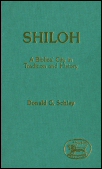
This work is the first comprehensive treatment of the biblical traditions pertaining to the Israelite sanctuary at Shiloh. A survey of previous research puts the current discussion of Shiloh into historical context and exposes the real issues behind the often bitter debate over Shiloh's supposed destruction during the Philistine wars and its traditional status as the first central shrine.
Donald G. Schley received degrees from Emory University and the University of Gottingen.
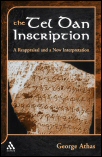
Tel Dan Inscription is the first book-length treatment of the most important, and controversial, inscription found in Israel in recent years. The inscription contains a possible mention of the name “David” and is thought by many scholars to verify the existence of this king. This volume contains a full account of the discovery, epigraphic analysis, paleographical analysis, possible arrangement of the three fragments discovered, textual analysis and historical commentary. It is more thorough in each of these treatments than any preceding discussion, and reviews all of the major theories about the inscription, with a well-considered conclusion.
The author moves carefully through each line of the inscription, painstakingly interpreting the Hebrew and comparing it with what is found on other fragments. The charts, tables, graphs, and drawings are quite detailed, and the bibliography at the end of the book demonstrates the scholarly nature of the study.
—Dianne Bergant, The Bible Today
George Athas received his Ph.D. from the University of Sydney. He is currently Lecturer of Biblical Hebrew and Koine Greek at Moore College, Australia.
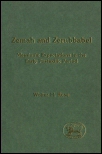
It has often been argued that Zerubbabel, the Jewish governor of Yehud at the time of the rebuilding of the temple (late 6th century BCE), was viewed by the prophets Haggai and Zechariah as the new king in the line of David. In this new study, Rose offers a contrary proposal for the interpretation of the oracles in Haggai 2 and Zechariah 3 and 6. He traces their background in the pre-exilic prophets, pays special attention to often neglected details of semantics and metaphor, and concludes that neither Haggai nor Zechariah designated Zerubbabel as the new king in Jerusalem. Instead, the oracles in Zechariah 3 and 6 should be seen as fully messianic.
Wolter Rose teaches in the Biblical Studies Department of the Theological University of the Reformed Churches in Kampen, The Netherlands.